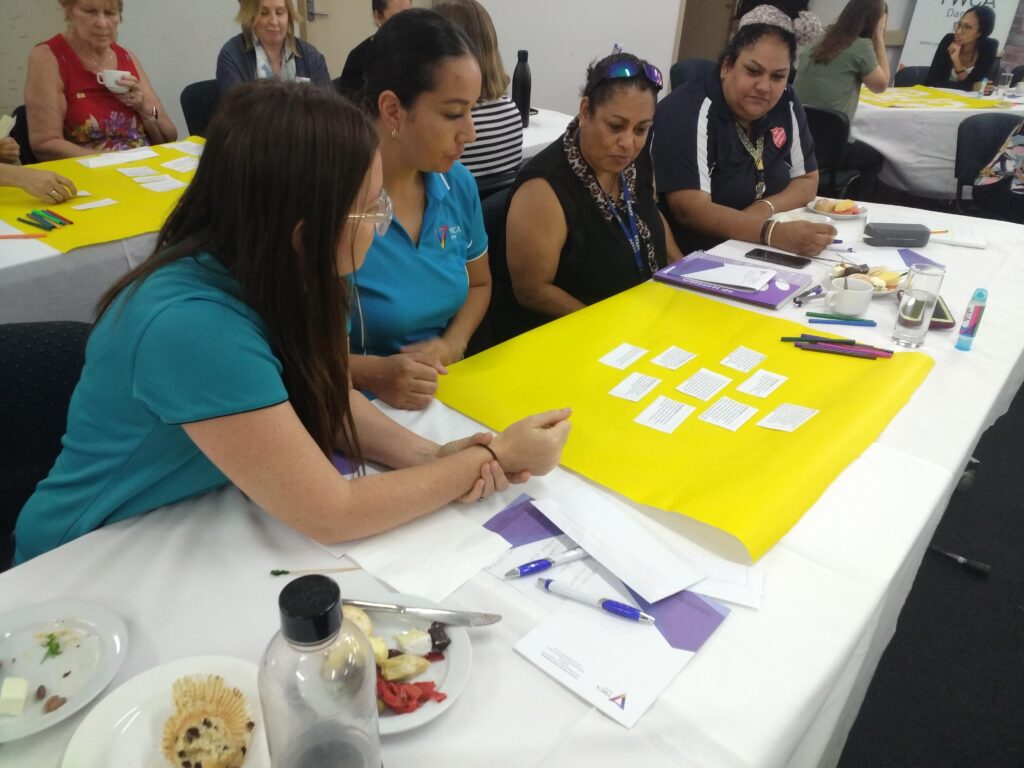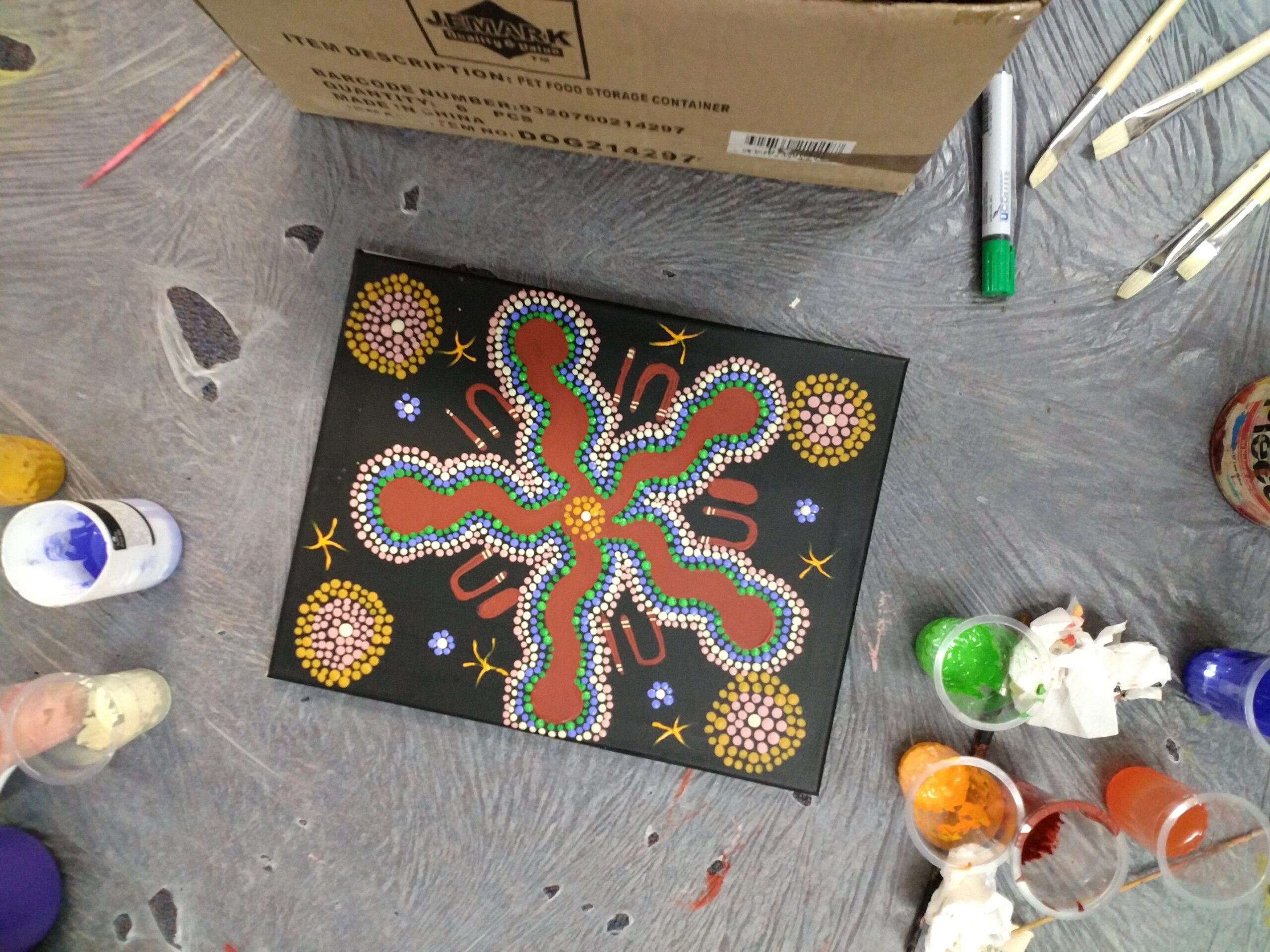This article was inspired by a talk given by Dr Chay Brown for ANU’s Centre for Aboriginal and Economic Policy Research, where she is a fellow.
At the start of the pandemic, I was returning home from presenting my research about violence against women in the Northern Territory at an international conference in Edinburgh.
I was travelling with my mother – a visually impaired and deaf woman who is a survivor of violence – and we made it back into the country a day before the borders closed. My mother became sick on the plane. We landed at Sydney international airport and immediately reported to health officials, who simply advised us to get on the next plane to our home, Alice Springs, where she could isolate in her home.
At that time, several Aboriginal community-controlled organisations in Alice Springs successfully lobbied the Northern Territory Government to close the Northern Territory’s borders. Once again, my mother and I raced home with only a day to spare before the borders closed, and two days later, I gave my final oral presentation before submitting my doctoral thesis about what works to prevent violence against women in the Northern Territory.
The day after, the lockdowns were announced. I remember my feelings of frustration and fear as government officials and public health officials made announcements and introduced public health measures, none of which recognized the increasing risk to women and children experiencing violence.
My mother did not have COVID at that time, but I remember her saying to me “If this [lockdowns] had been several years ago, it would have been the end of us.”

A smoking ceremony at a the start of a strategic retreat with Tangentyere Women’s Family Safety Group (TWFSG) at Ross River. This retreat was about developing future pathways and work for TWFSG. Chay attended to collect data for her doctoral research. Picture: Supplied
No one enjoyed the lockdowns, but for many women and children all around the world, they were unsurvivable.
Violence against women, often referred to by its most common forms of domestic, family, and sexual violence, is a problem that transcends geographic, social, and cultural boundaries. In Australia, 1 in 3 women experience physical violence and 1 in 5 experience sexual violence from the age of 15.
Women most commonly experience violence at the hands of a current or former male partner, and on average, one woman is killed each week. In the Northern Territory, these rates are higher and disproportionately impact Aboriginal and Torres Strait Islander women. 63% of assaults in the Northern Territory are related to domestic and family violence, and women make up 63% of the victims.
This differs from other jurisdictions (and other contexts around the world) where usually men make up the majority of assault victims, and reflects the Northern Territory’s high rates of domestic, family and sexual violence. No matter the gender of the victim, violence is overwhelmingly perpetrated by men, and domestic, family, and sexual violence is most commonly perpetrated by men against women and children.
The Northern Territory has the highest rates of domestic family and sexual violence in Australia, including in severity, with weapons being used in 2 of every 5 assaults. Domestic family and sexual violence in the Northern Territory is double that of Western Australia, three times that of South Australia, and more than five times that of other jurisdictions.
However, all of this data only reflects that which has been reported and likely only represents the most severe of cases, as globally less than 40% of violence against women is ever reported. Data on violence against women in Australia, and particularly in the Northern Territory, is flawed and overly reliant on administrative data from police and services, which does not and cannot capture the full picture of violence against women.
The problem of violence against women was high and severe prior to the pandemic, but public health measures designed to curb the spread of COVID-19 exacerbated the gendered drivers of violence and introduced risk factors, leading to increases in violence against women throughout the world – leading to it being labelled ‘the shadow pandemic’.
In Brazil, there was an estimated 40-50% increase in domestic violence. In Cyprus, calls to the domestic violence helpline rose by 30%. Domestic violence reports in China tripled during the pandemic. In other areas, such as Italy and Argentina, calls to helplines dropped sharply – but messages, emails, whatsapp increased. Family violence reports in Victoria were the highest on record, up by 6.6% in the first year of the pandemic. In the Northern Territory, reported domestic, family and sexual violence increased by 25%.
These widespread increases were predicted by experts in the field, yet ignored. I myself wrote and spoke extensively at the beginning of the pandemic about the increasing risk to women and children during this time, but it would not be until much later that ‘escaping family violence’ was included as one of the five reasons people could leave their home during lockdowns.
However, even this response is flawed and ignorant of family violence as a the highly controlling pattern of abuse, power and domination.

Paintings done in a workshop with the Tangentyere Women’s Family Safety Group (TWFSG). These paintings are the women’s reflections on what a future free from violence would look like. Picture: Supplied
So why did violence against women increase during the pandemic?
- Proximity – women and children found themselves stuck in their homes with users of violence. Not only does this make it difficult for women and children to leave, it also isolates them from their social networks, which are key supports for women and children experiencing violence. It also prevents them from accessing safe places, such as schools, supermarkets, and hairdressers. It also makes it very difficult for them to call for help when the abuser is in such close proximity, perhaps explaining why women in many locations throughout the world began using alternative means, such as whatsapp, to seek help.
- Introduction or increased risk factors – violence against women and children increases in humanitarian and disaster settings, such as the Black Saturday fires in Australia. For many women, they make their first report of violence in the aftermath of disaster. The increase in these settings is theorized as being the result of the introduction or increased risk factors for violence in the household, such as trauma, alcohol and other drugs, relationship conflict and food insecurity. The pandemic similarly increased the presence of these risk factors and stress on households.
- Exacerbation of the gendered drivers of violence – gender inequality is a key driver of violence against women as gender-discriminatory or gender-insensitive structures, social norms, practices, and relationships create an environment where women are perceived as not being equal to men. These drivers also create and promote women’s dependence on men, creating a power imbalance, and resulting in conditions where violence against women can occur, and is minimized, justified or condoned when it does. When schools and workplaces closed during the pandemic, it increased women’s unpaid care work in the home, as women took up increased roles of teaching and caring for children, whilst men largely did not. Women are also more likely to be in low-paid and insecure employment, meaning that women were more likely to lose their jobs during the pandemic, increasing their financial dependence. ‘Feminised’ industries were also disproportionately impacted by the pandemic, and less likely to be supported by government assistance, such as childcare and early learning These conditions exacerbated women’s dependence on men, and increased their isolation – therefore increasing the risk of violence.
Not only did violence against women increase during the pandemic, but it often intensified and became more complex. For example, users of violence often made use of public health messaging to limit women and children’s movements, control their healthcare decisions, and/or used misinformation about COVID or vaccinations to further control women and children.
Frontline services also reported that women and children presented with more complex needs, for example, requiring assistance with food insecurity in addition to assistance with domestic, family, and sexual violence.
Despite the increasing complexity, frequency, and severity of violence against women during the pandemic, frontline services responded creatively and innovatively. In my home of Central Australia, Aboriginal community-controlled organisations assisted Aboriginal and Torres Strait Islander people to ‘return to country’ where bio-security measures where introduced to limit the spread of COVID-19.
Specialist domestic, family and sexual violence services, themselves severely impacted by the pandemic and public health measures, pivoted and adapted to deliver services in extremely remote locations. The Tangentyere Council Men’s Behaviour Change Program began delivering individual sessions with users of violence, including over the phone, to maintain engagement and monitor the risk men posed to their partners and children.
NPY Women’s Council delivered weaving materials to women in quarantine to continue engagement and support, and even charted flights to evacuate women experiencing violence from remote locations. Katherine Women’s Legal Service (KWILS) delivered ‘women’s business’ bags to women in lockdown in Aboriginal communities and Town Camps that included safety planning tips and service contact details. However, all of these creative and innovative responses were in spite of extremely limited resources, funding, and support.

Participants at an Alice Springs workshop to develop the Northern Territory prevention framework ‘Hopeful, Together, Strong’ – this was the final product of my doctoral research. ‘Hopeful, Together, Strong’ is a framework of principles and indicators to describe good practice to prevent violence against women in the Northern Territory. In the pictures, the participants are ranking principles that were identified through my research with TWFSG and other programs in the Northern Territory. Picture: Supplied
Now as the World Health Organisation signals that the end of the COVID-19 pandemic is in sight, where to for the shadow pandemic? There is no end in sight for the pandemic of violence against women. Violence against women in the Northern Territory continues to dramatically rise. We should have learned during the COVID-19 pandemic, that our policy responses must:
1) be informed by accurate data
2) apply a gender lens
3) apply a ‘DV lens’ and considered the way our policy and programmatic responses may impact domestic, family, and sexual violence survivors and 4) consider the impact on historically marginalized people, and in low-resource settings, such as Central Australia.
We should have learned these things, but I’m not sure we have. My mother and I made it home safely. We survived the COVID-19 pandemic, just as we survived domestic, family and sexual violence. But many other women and children did not.
- Feature image: A painting done in he Tangentyere Women’s Family Safety Group (TWFSG). TWFSG was a key partner in Chay’s research about what works to prevent violence against women in the Northern Territory. These paintings are the women’s reflections on what a future free from violence would look like. Picture: Supplied





